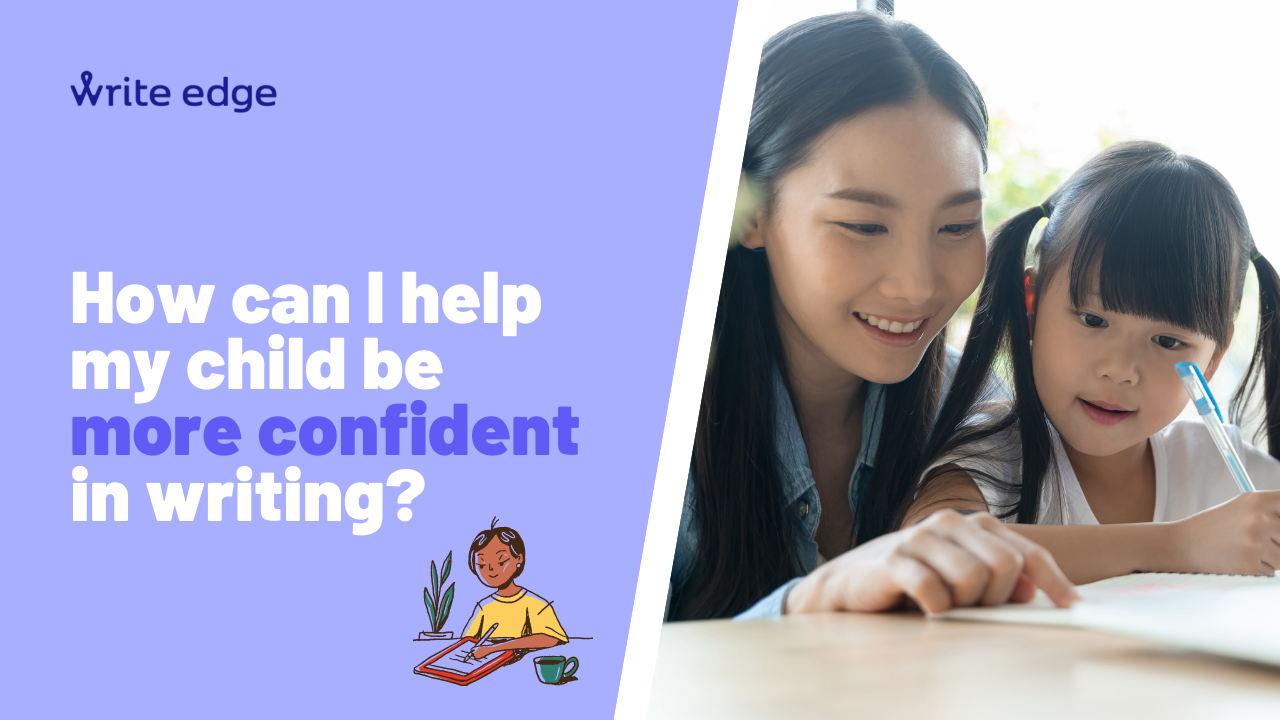Ask any primary school student in Singapore, “What’s your least favourite part of English lessons?”, and chances are, they will tell you that they dislike creative writing. Many students dread writing, and it is one of the biggest challenges they face when it comes to composition examinations in school. In this article, we will share some tips and tricks on how to foster confidence in English and Writing.
- Creative writing
Most children love to talk, and in that same vein, we believe that children naturally love to write as well. One reason why so many students dread writing is perhaps the weight of an assignment, and the unpleasant feeling of putting effort into their work, only to have it picked apart by a teacher and returned as a sea of red. Thus, we encourage children to write more often for fun.
Even if it is only for one minute every day, journals are a great way for children to write authentically, and find joy in putting their ideas and passions into words. It is a confidence booster when children manage to write something they are proud of, without worrying about spelling, grammar, and organisation. Other than writing about their days, children should be encouraged to write about whatever they want, such as beloved characters from television shows, or even spin-offs of their favourite books.
- Structuring the writing process
Learning to be creative is all well and good, but students are required to write in the provided context for school assignments, which limits their creativity and can leave them stumped. This is where structure can be very helpful for less confident students. Following specific steps can help even the most reluctant writers find success. Our teaching model at Write Edge strikes a balance between providing structure and creativity. With structured teaching, our students are able to have increased retention of skills taught, as they can follow along step-by-step and apply the skills taught when writing independently later.
- Brainstorming together
Brainstorming is a crucial part of the writing process, where students must plan and organise their thoughts and ideas. Sharing ideas with friends or family before beginning to write helps children to put their thoughts into words, as well as bounce ideas off the other person. Parents can ask their children questions while they brainstorm, to prompt more details and to help them clarify their ideas. For children who struggle to put their thoughts into words, parents can help to write down their ideas while they brainstorm out loud. On the other hand, the presence of a peer helps to motivate both children to put more effort into their assignments, and the mutual support can help both of them to feel more successful as they begin writing.
- Scaffolding and modelling
Often, a school teacher may task students to write an essay on a subject, expecting them to come up with their own ideas. No support, no structure, and no presentation. This usually ends up with causing students undue stress as they have no idea how to even begin! Scaffolding is important for students at every level of learning, where teachers systematically build on what students already know to teach new skills.
At Write Edge, we follow a “PPP model” – Presentation, practice, and production. First, the teacher presents and demonstrates how to write a model composition. Next, students practice with the guidance of the teacher, and then they independently produce a piece of writing. This consistent reiteration helps increase vocabulary retention and bridge the gap between learning the skills and applying them to the final task. When a student successfully produces a piece of writing they are proud of, even with guidance, this is a great boost to their confidence in writing!
- Teaching applicable skills
Many students who dread writing are afraid of receiving a marked piece of work covered in red crosses and circles. We boost our students’ confidence at Write Edge by marking out students’ use of writing skills that they learnt in class! This not only empowers them, but it is also very helpful when they are revising later on.
Moving away from an emphasis on memorising grammar rules and regurgitating handfuls of impressive phrases, we integrate useful writing techniques in our writing lessons. After students have learnt the skill, they have a chance to immediately apply them to their writing. This helps students to use good writing techniques more organically, and it increases retention as well!
At Write Edge, we have found that by incorporating some of these strategies in our curriculum, students are more empowered when writing. They also have a clearer idea of teacher expectations, and are more confident in tackling writing assignments. After all, the best way to boost confidence is through consistent success, and by equipping our students with the right writing tools, we aim to boost their morale and nurture their love for writing.
We hope that these tips and tricks have been helpful, and can help to increase confidence in budding writers!

